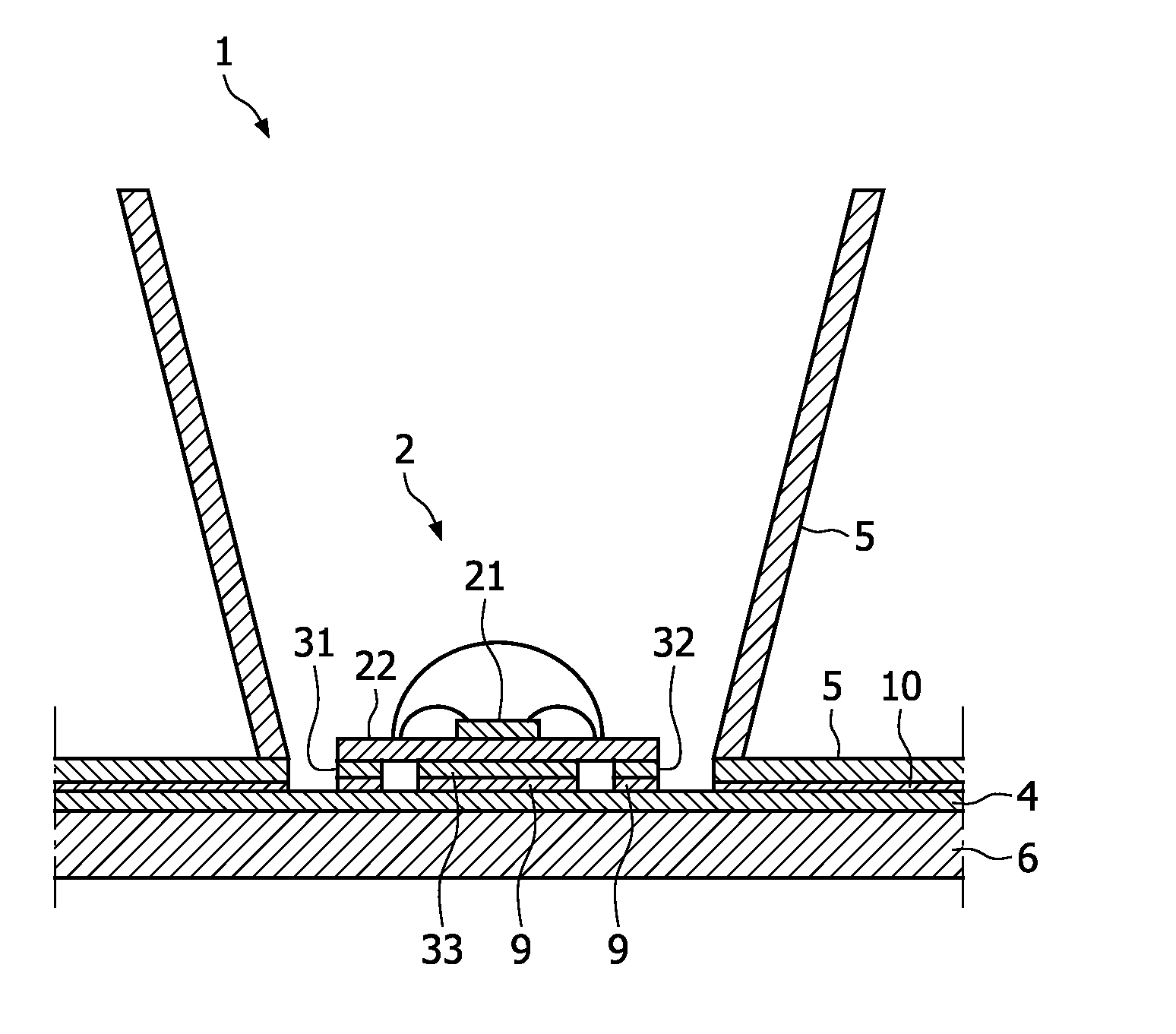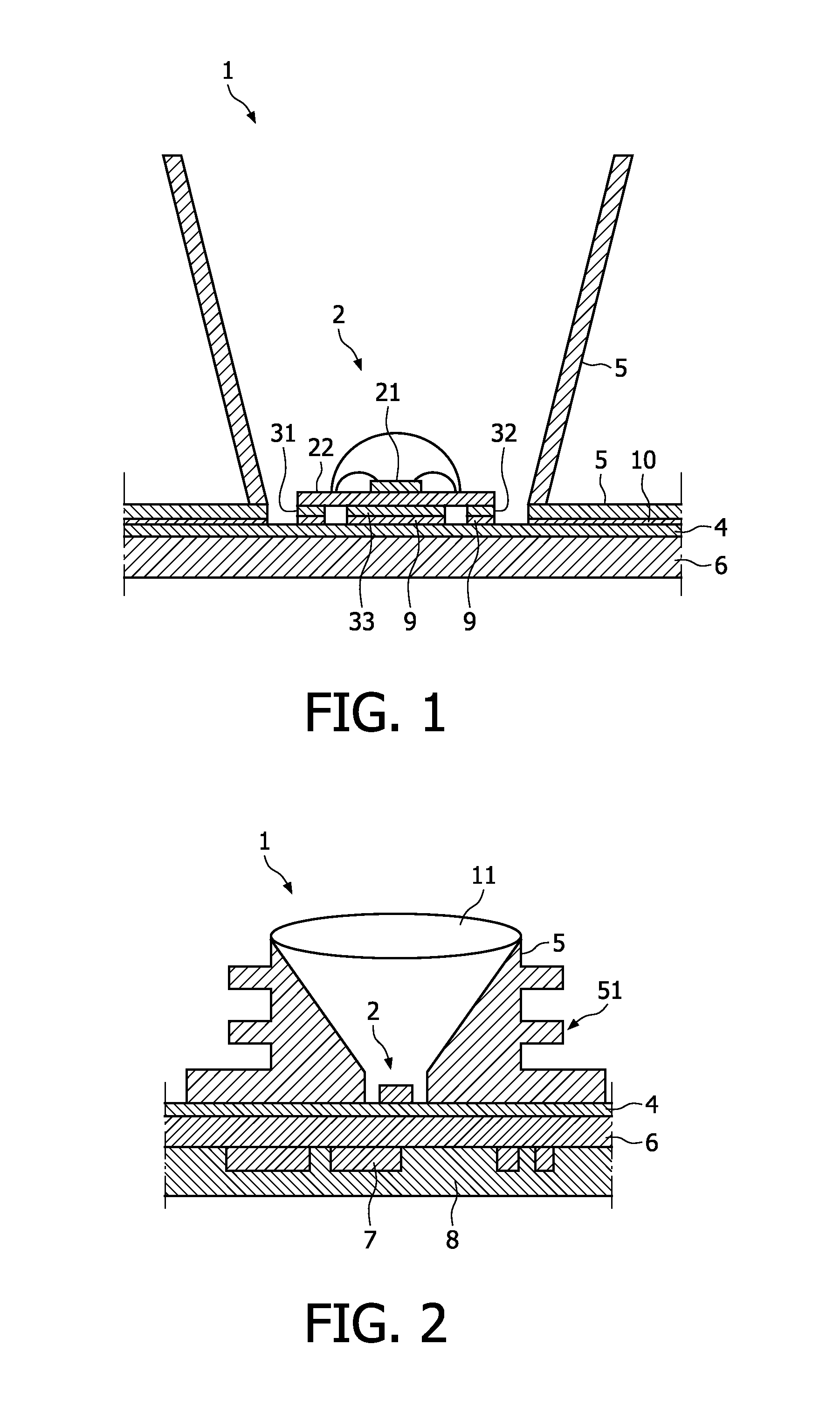Light-emitting arrangement
a technology of light-emitting arrangement and shielding structure, which is applied in the direction of semiconductor devices for light sources, lighting and heating apparatus, printed circuit aspects, etc., can solve the problems of mechanical robustness and uncomplicated arrangement, and achieve the effect of reducing the need for a separate shielding structure, saving space, and simplifying the manufacturing process
- Summary
- Abstract
- Description
- Claims
- Application Information
AI Technical Summary
Benefits of technology
Problems solved by technology
Method used
Image
Examples
Embodiment Construction
The present invention will now be described more fully hereinafter with reference to the accompanying drawings, in which preferred embodiments of the invention are shown. This invention may, however, be embodied in many different forms and should not be construed as limited to the embodiments set forth herein; rather, these embodiments are provided for thoroughness and completeness, and fully convey the scope of the invention to the skilled addressee. Like reference characters refer to like elements throughout.
FIG. 1 shows a light-emitting arrangement according to an embodiment of the invention. The light-emitting arrangement 1 comprises a light-emitting diode (LED) 2 mounted on a printed circuit board (PCB) 6. The LED 2 comprises an LED chip 21 arranged on a substrate 22 and electrically and thermally connected to electric contacts 31, 32. The electric contacts 31, 32 are electrically and thermally connected to at least one electrically and thermally conductive portion 4 of the PCB...
PUM
 Login to View More
Login to View More Abstract
Description
Claims
Application Information
 Login to View More
Login to View More - R&D
- Intellectual Property
- Life Sciences
- Materials
- Tech Scout
- Unparalleled Data Quality
- Higher Quality Content
- 60% Fewer Hallucinations
Browse by: Latest US Patents, China's latest patents, Technical Efficacy Thesaurus, Application Domain, Technology Topic, Popular Technical Reports.
© 2025 PatSnap. All rights reserved.Legal|Privacy policy|Modern Slavery Act Transparency Statement|Sitemap|About US| Contact US: help@patsnap.com



